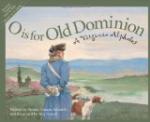And as the House of Burgesses had indeed followed in this respect the custom of the English House of Commons, we were glad to see Cornelius for once in accord with other historians.
Then, Nautica spoke of how the very year that saw the beginning of free government in America saw the beginning of slavery too; and she asked Cornelius if he knew that the first coloured people were brought to America in 1619 and landed there at James Towne.
“Yas’m; ev’ybody tole me ’bout dat. Seem like we got heah ’bout as soon as de white folks.”
It was a comfortable view to take of the matter, and we would not disturb it.
Cornelius told us other things.
“Dis, now, is de off season for touris’,” he explained. “We has two mos’ reg’lar seasons, de spring an’ de fall, yas, suh. I drives right many ovah heah from Willi’msburg. I’s pretty sho to git hol’ of de bes’ an’ de riches’. An’ I reckon I knows ’bout all dere is to be knowed ‘bout dis firs’ settlemen’. I’s got it all so’s I kin talk it off an’ take in de extry change. I don’ know is you evah notice, but folks is mighty diffrunt ‘bout seem’ dese ole things. Yas, suh, dey sut’n’y is. Some what I drives jes looks at de towah an’ nuver gits out de ker’ige; an’ den othahs jes peers into ev’ythin’. Foh myse’f, now, I nuver keers much ’bout dese ole sceneries; but den I reckon I would ef I was rich.”
CHAPTER VIII
PIONEER VILLAGE LIFE
That first little four-acre James Towne, located in the neighbourhood of the present Confederate fort, soon outgrew its palisades. In what may be called its typical days, the village stretched in a straggling way for perhaps three quarters of a mile up and down the river front, and with outlying parts reaching across the island to Back River. It usually consisted of a church, a few public buildings, about a score of dwellings, and perhaps a hundred people.
One of the principal streets (if James Towne’s thoroughfares could be called streets) ran close along the water front. While it must once have had some shorter name, it has come down in the records as “the way along the Greate River.” Here and there traces of this highway can still be found; and the mulberry trees now standing along the river bank are supposed to be descendants of those that bordered the old village highway. Next came Back Street upon which some prominent people seem to have lived. Apparently leading across the head of the island from the town toward the isthmus was the “old Greate Road.” There still appear some signs of this also near the graveyard. Besides these highways there were several lanes and cart-paths.
The eastward extension of the village, called New Towne, was the principal part. It was the fashionable and official quarter. Here lived many “people of qualitye.” Royal governors and ex-governors, knights and members of the Council had their homes along the river front, where they lived in all the state that they could transplant from “London Towne.”




